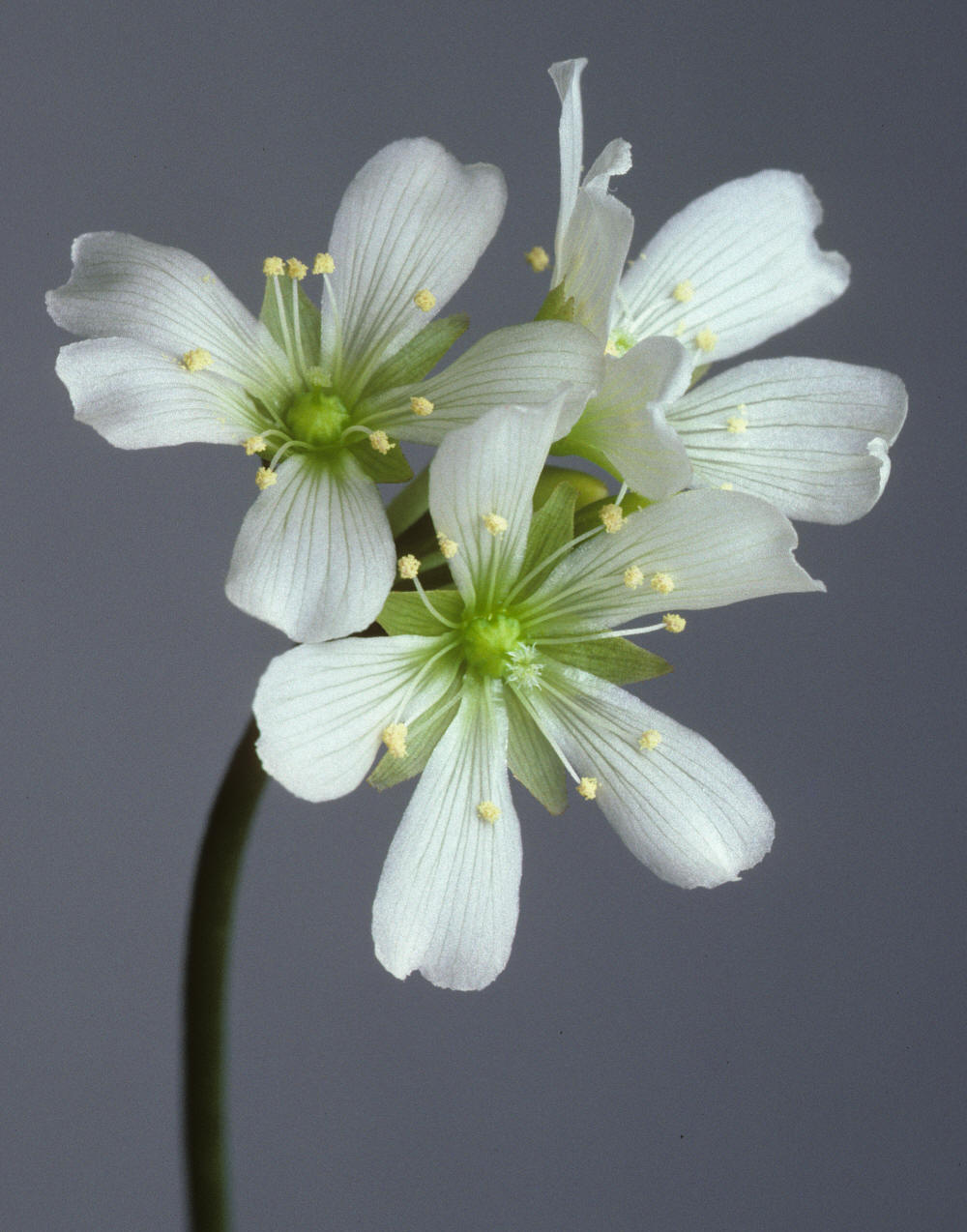| Adapt To Trap |
|---|
| In a way, Venus Fly Traps are smarter than humans.
When some humans hunt for food they lay out a trap, go retrieve the dead
animal, cook it, and consume it. A lot of energy goes into their
meal. The Venus Fly Trap on the other hand, just modifies part of
itself into the trap. In addition, it decides whether or not the
prey is too small to trap, which allows it to save additional energy.
Now how smart do you feel?
The Dionaea muscipula is famous for its unique ability to trap its prey. The active steel-type trap develops from the leaves of the plant. Like most plants, the leaf consists of the petiole and the blade. In the Dionaea muscipula's case, the blade is modified into the trap while the petiole supports the trap and stores food. In addition, 15-20 marginal spines are located at the ends of the blades. These spines are arranged so that they interlock with closure. (To get a better idea of this action, place your two wrists together. Now bring your palms together and interlock your fingers. This action mimics the closing of the trap). The traps are also arranged in a rosette around the growing point. The rosette arrangement allows new traps to form in the center while receiving protection from outsiders by the older traps. ( The picture below shows the larger adult traps surrounding the newly formed traps).
The Venus Fly Trap is extremely focused on using the least amount of energy possible for optimal results. Therefore, the trap runs by a "two-touch" rule. In order for the trap to close, a single hair must be touched twice or two separate hairs in succession. To eliminate closure on false alarms, such as raindrops or twigs, the two touches must occur within 1-20 seconds of each other. This helps to ensure the plant that it will receive food in return for its energy expenditure. In addition to the trigger hairs, other parts of the trap are also sensitive. The abaxial side of the trap is covered with stellate trichomes that alert the adaxial trigger mechanism to close the trap. This takes hundreds of touches to make the trap activate, so it is less common. Also, the inside of the triangle formed by the trigger hairs and the portion by the midrib are also sensitive, but not as efficient as the trigger hairs (shown below).
To Every Season, Turn Turn Turn ... The Venus Fly Trap has seasonal traps. In a springtime, the
traps are green with broad petioles that possess wings. The red
coloration is often times absent or refined to only the adaxial side of
the trap. The spring traps last until flowers form in
the early summer. Next, the summer traps
Flowers Flowering takes place between mid-May and the first two weeks of June. The Venus Fly Trap vertically extends a tall scape from its growing point. The terminal buds open first, then the flowers gradually open toward the base of the scape. Each plant forms between 1-15 flowers. Each flower is composed of 5 green sepals, 5 white petals, 15 stamens, and 1 compound pistil.
|
|
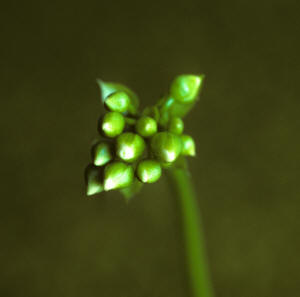 Photo - Carnivorous Plant Dionaea by Makoto Honda |
|
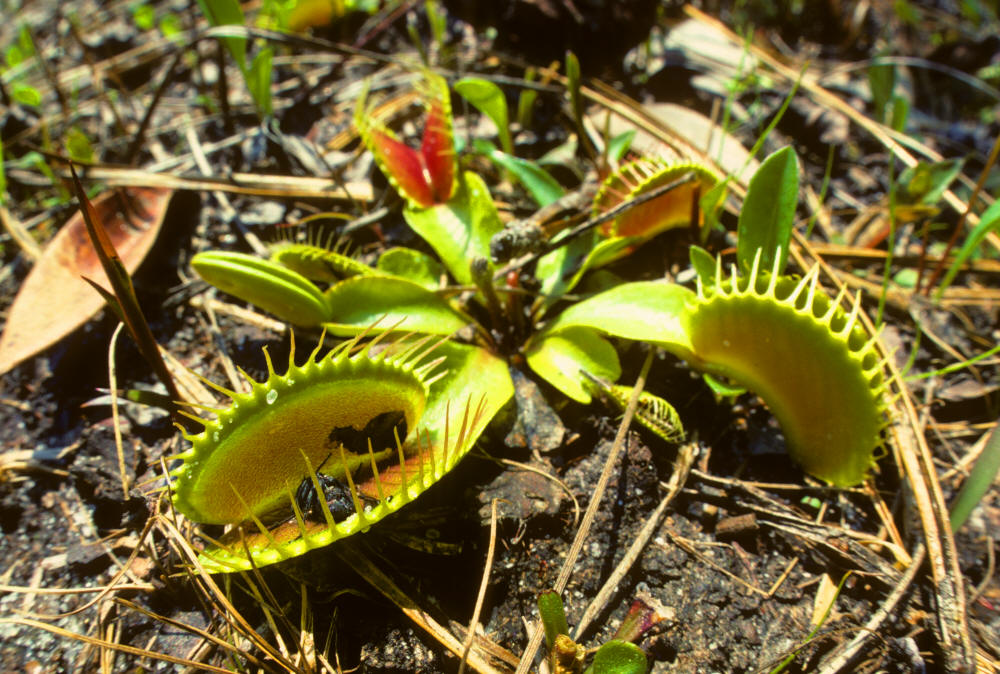
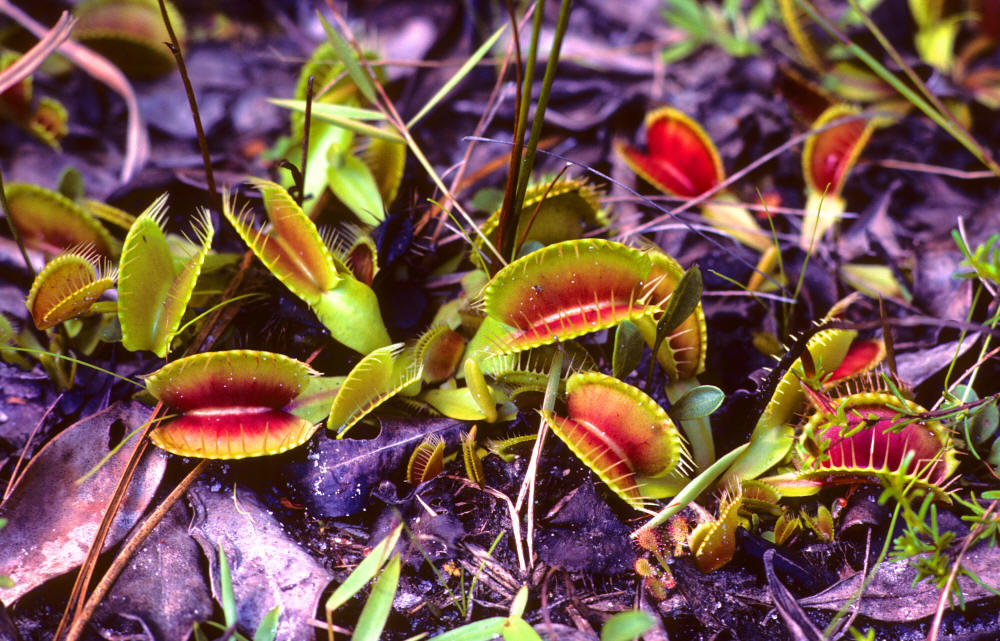 Each trap has two lobes that are connected by the
Each trap has two lobes that are connected by the
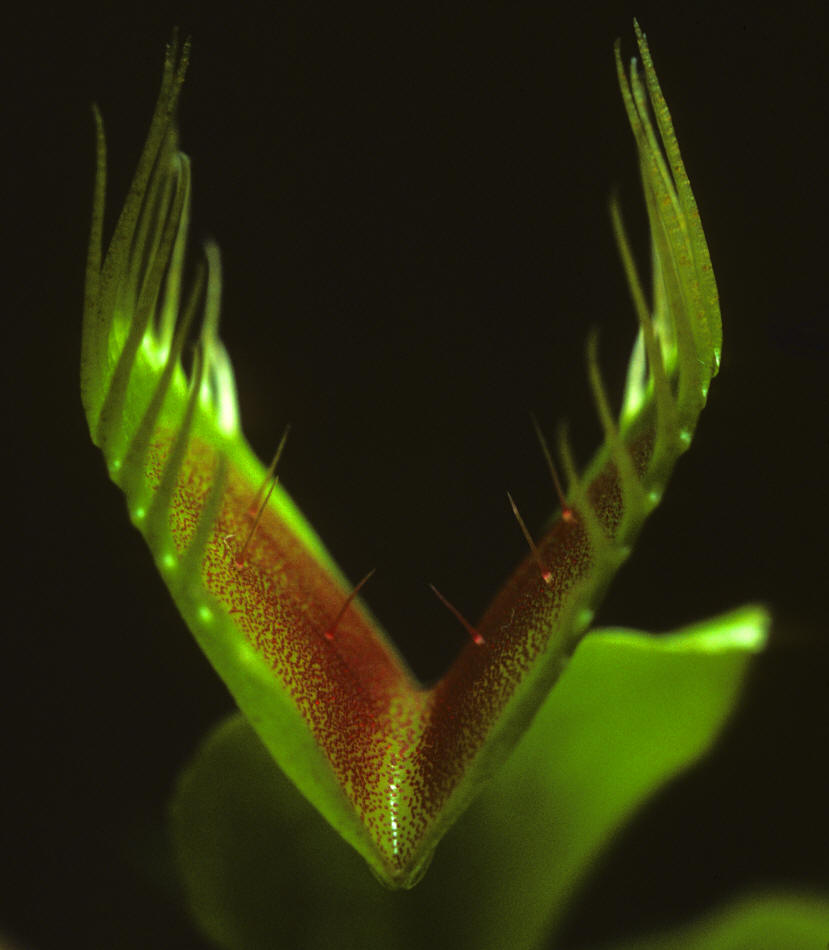 are narrow and wingless, unlike the spring traps. They also grow
vertically and turn a deep maroon color in the intense sun. This
coloration acts as an attractive feature for the future items on its
lunch menu. For fall, there is no distinctive trap variation.
Lastly, the winter traps are the smallest in length and about average in
width. They are found lying prostrate and are prone to frost bite,
which eventually leads to death.
are narrow and wingless, unlike the spring traps. They also grow
vertically and turn a deep maroon color in the intense sun. This
coloration acts as an attractive feature for the future items on its
lunch menu. For fall, there is no distinctive trap variation.
Lastly, the winter traps are the smallest in length and about average in
width. They are found lying prostrate and are prone to frost bite,
which eventually leads to death.